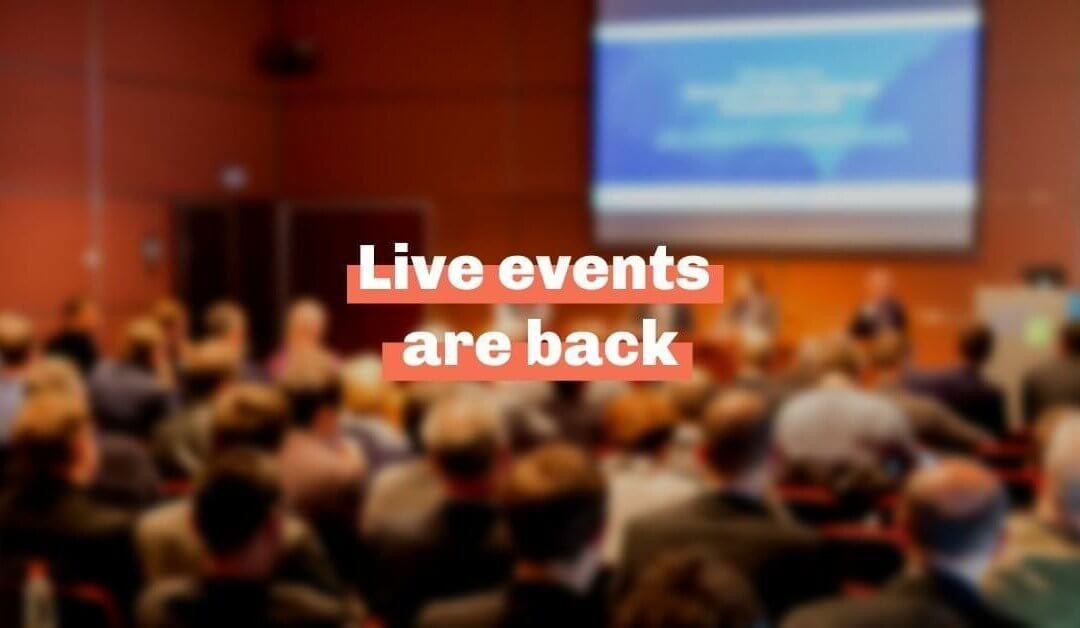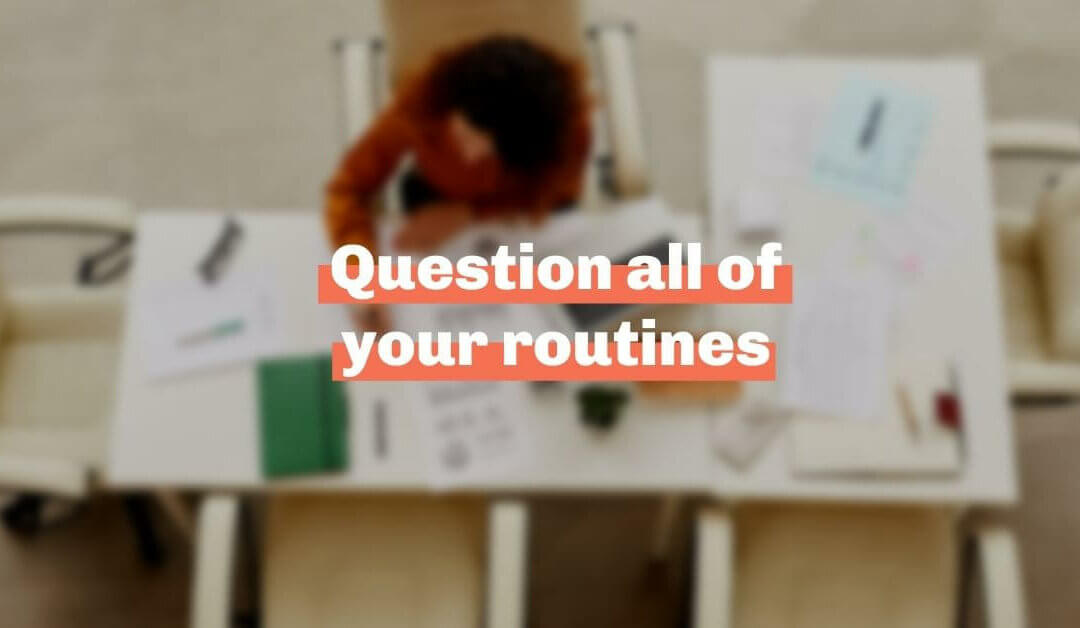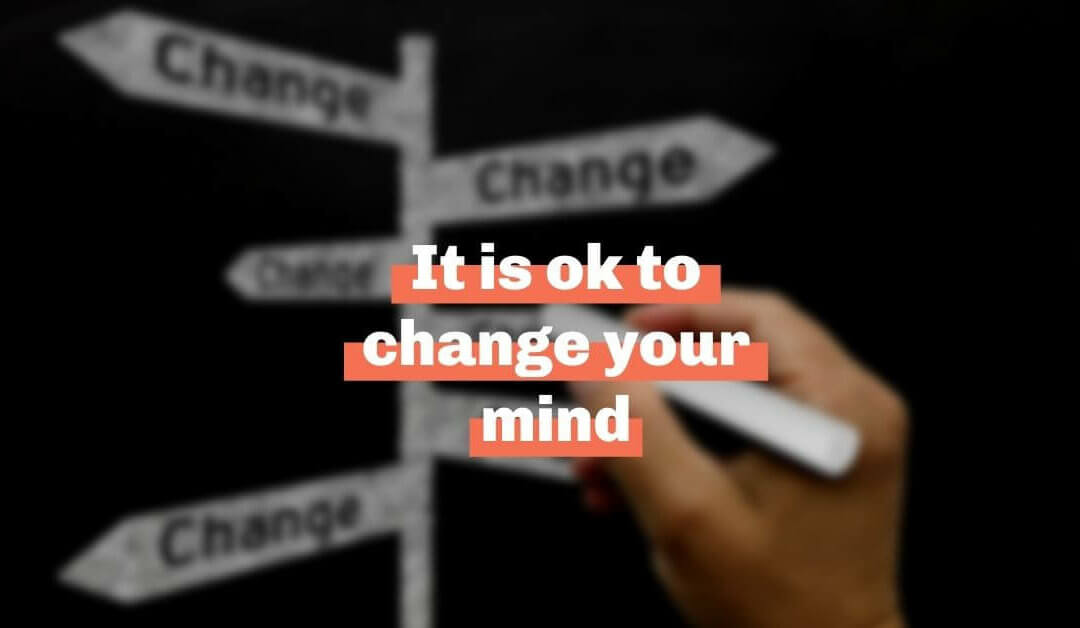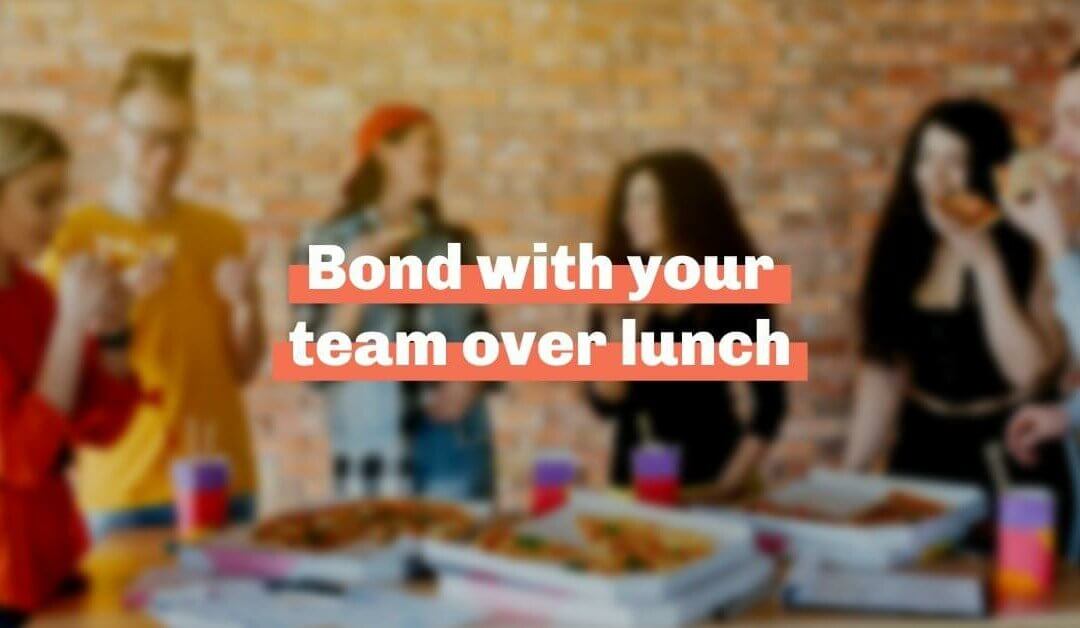
by Allison Kooser | Jun 17, 2021 | The Intro
Last week, we helped produce a live, in-person event for one of our clients.
In the “before times,” events were part of our daily lives. We hosted, scripted, choreographed, and dreamed up dozens of fundraisers, conferences, and gatherings for awesome organizations. (And FYI, we still love doing this! Let us know if you need help with your next event—regardless of it’s in-person or virtual!)
Then, like you, we pivoted.
All of us shifted to all-virtual everything. Zoom happy hours. Online conferences. Chat rooms and livestreams and conference calls. You did what you needed to do to stay connected. It was hard and awkward and definitely not ideal, but you made it work.
Now, we’re all pivoting back.
We’re going back to the office, the conference room, the events. We’re learning how to interact with one another again.
And even amidst all the smiling faces and hugs, this return feels almost as jarring and disorienting as the one we walked through last March and April. Because we’re rusty. And donors are rusty. And big social gatherings feel joyful and strange and tiring and like the best thing ever—all at the same time.
So give yourself a break. Brush up on your small talk. And plan for a few extra naps.
This transition might be hard. But speaking from personal experience, gathering in person again is something worth celebrating. And we can’t wait to see you in person soon!

by Allison Kooser | Jun 3, 2021 | The Intro
Here at Swell+Good, Adam Grant has a hall pass. We’ll read everything he writes, and his tweets-turned-instagram-posts regularly make the rounds in our DMs and team updates. (Who are your “hall pass” writers/thinkers/voices? Send us a note and let us know—we’d love to follow them!)
Last week, he posted this simple (and gut-punching) message.
Oof. That hits hard.
Generally, we like to think that we’re pretty good at this. We spend lots of time thinking beyond the what of our work, and diving deep into the how. What are our processes? What are our metrics? What is working (and what isn’t)?
Our end goals are simple: do great work for our clients, be efficient, and help awesome organizations thrive.
But lately, we’ve added another priority to our list—and it’s caused us to rethink all of our habits yet again. We still want to do great work (this will never change). And we absolutely want our clients to thrive (duh—we love you guys!).
But we also want to make sure we are healthy and happy in our work.
We started Swell+Good because we felt called to build something that was our own—something that reflected our values and let us shake things up a little bit. But even the independent, entrepreneurial path is littered with land mines of tradition, expectation, and “this is the way things are.”
There are countless voices telling us the way things “should” be done—and all too often, those “shoulds” sound like (or lead to) overwork, stress, chaos, a lack of creativity, and burnout.
We’re over it.
We want to stay true to our own goals—which means questioning all of our routines, even when it’s uncomfortable. What happens if we cancel that meeting (PSA: cancel the meeting!) or simplify that deliverable? What happens if we don’t use the tool that everyone swears by? What happens if we just say no to a project? Or say yes to one that feels exciting and life-giving but absolutely wild?
What is possible if we ask the questions? Choose our own path? Look at things differently? Can we still achieve our goals?
You get to build your life—and you get to build your career. If something isn’t working for you, change it. If your habits are bad for your mental health, scrap them. Build routines that get you to the future you want—even if that means charting your own course. The status quo is overrated, anyway.

by Allison Kooser | May 27, 2021 | The Intro
If the past 15 months have taught us anything, it’s that change is part of the deal. In our experience, the people (and organizations) who have navigated the pandemic most successfully have been the ones who prioritized flexibility, held their commitments lightly, and ignored sunk costs.
None of this is easy: great ideas are hard to release (even if they are decidedly not working), and once we get going on a path, turning around can feel impossible. But not pivoting can be ruinous.
In the wise words of Frozen: sometimes you just need to let it go.
Your commitments matter, and you should honor them. But sometimes, a promise made in one season doesn’t hold up in the next. Sometimes, you design a great campaign and then funding priorities change. Sometimes, you take a job and then realize that it’s not a good cultural fit. And sometimes, you create a comprehensive strategic plan and then a global pandemic disrupts literally everything (you know, hypothetically…).
It is ok to change your mind.
The best leaders are the ones who are able to say they were wrong. The ones who are willing to do the hard work of changing course. The ones who know when to dig in—and when to give up. The ones who know that sticking with a bad idea is way more costly than losing what you’ve already invested.
Remember that ship that got stuck in Suez Canal in March? There’s an extended metaphor in that story for all of us…
Staying on the wrong course (even just a few degrees off) can be disastrous. And at a certain point, you’re stuck. Turning around—or even moving at all—once it’s too late requires huge amounts of effort, time, human labor, intellectual capital, and money.
So consider this your hall pass to wave the white flag. Own your mistakes. Change your mind. Say something as soon as you realize things aren’t going well. Be ready to pivot.
Changing course is ok—and sometimes, it’s the only way to keep moving forward.

by Allison Kooser | May 22, 2021 | Gratitudes
This week, we are thankful for…rain. We love sunshine as much as anyone. (Truly. Sunny days are life-giving.) But sometimes, you just need a downpour to wash away the heat, the dirt, and maybe even that stress you can’t seem to shake. (And for our team in Austin, Texas, rain means a brief respite from already-sweltering temps…which is a huge win.)
So next time the clouds roll in, curl up with a book, jump in the puddles, and be thankful for the fresh start.

by Allison Kooser | May 20, 2021 | The Intro
One of our favorite parts of the work day is lunch.
Before the pandemic, we spent a lot of time thinking about office culture and team dynamics. And one of the decisions we made early on was that our team would eat lunch together. Every day.
The rules were simple: get away from your desk, no work-talk allowed.
We spent time laughing, telling stories, and, most importantly, listening to one another—getting to know each other as people, not just colleagues.
Our daily lunches became a core component of how we built relationships and strengthened our team. We got to know each other well because we invested the time to get to know each other well. It was a conscious choice—one that has paid off a million times over.
Over the last 15 months, we have had to rethink how we connect with our teammates. Daily lunches aren’t a great option anymore (Zoom lunches just don’t quite do it…though we have certainly tried!), so we’ve resorted to no-work-talk text threads and the occasional virtual happy hour.
It’s not the same. But we’re trying.
We don’t know what the future of work will hold. Our team works remarkably well remotely—and we’ve been able to hire people from all over the country in this weird season. There are definite benefits to the all-virtual work day.
But we miss lunch.
We miss telling silly jokes and rolling our eyes at one another. We miss the built-in, very intentional break in the middle of the day. We miss hearing about our teammates’ weird hobbies and childhood memories and the shows they binged last weekend.
We are definitely getting closer to being able to sit around the table with one another again, but we aren’t fully there yet. And it’s super likely that we’ll never go all the way back to the way things were.
So it’s time to get creative. How have you been intentional about finding time to bond with your team? What great ideas do you have for how to connect—even when we’re physically apart? If you have ideas, let us know (we’re genuinely curious!).
And when (if) you go back to the office, consider adding lunch to your team’s agenda. If your experience is anything like ours, it will make your team, your relationships, and, yes, even your work better.





